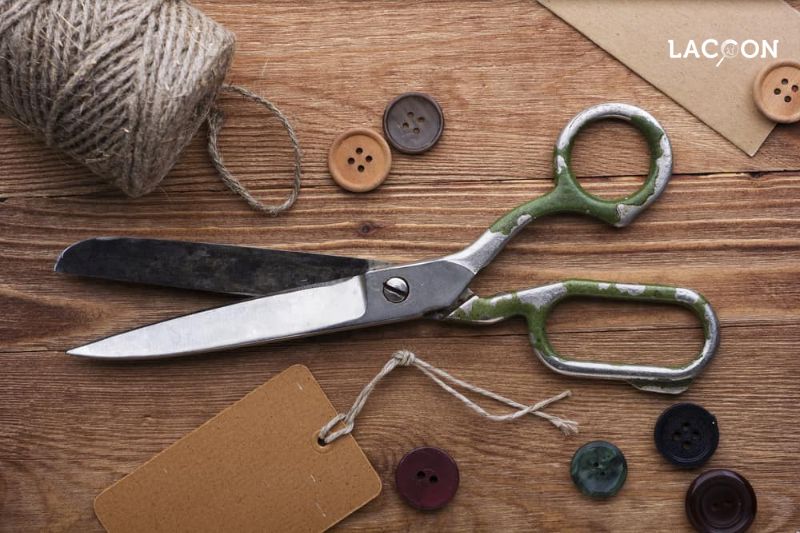If you’re like most people, you probably have a pair of scissors in your desk drawer or kitchen. But have you ever stopped to wonder who invented scissors? It turns out that the history of this simple tool is more fascinating than you might think.
Who Invented Scissors

Many people mistakenly believe that Leonardo da Vinci invented scissors. However, the true origin of scissors is lost to history. Some historians believe that scissors were invented in the Middle East as long as 3,000-4,000 years ago.
The ancient Egyptians created a scissors-like device around 1,500 B.C. The device consisted of two bronze blades connected by a spring-like mechanism that kept the blades apart until they were squeezed together. A pair of scissors more like our modern scissors with a cross-blade or pivoted design was developed by the ancient Romans around 100 A.D.
The Evolution of Scissors

Pivoted, cross-blade scissors were made by hand for hundreds of years. In fact, they weren’t mass-produced until 1761 when English manufacturer Robert Hinchliffe adapted the design so it could be manufactured in a factory. Hinchliffe was also the first to make scissors out of steel.
Today, there are a wide variety of different types of scissors with specific purposes. For example, scissors with a length in excess of six inches are often referred to as shears. Long shears with tough blades have been developed to cut metal and trim shrubs.
Children’s or safety scissors have dull blades and rounded tips to ensure their safe use in school environments. Nail scissors were specially developed to cut fingernails and toenails. You’ll also find specialty scissors used by hairdressers and seamstresses for their specific needs.
Scissors in Popular Culture

Ancient Scissors
The ancient Egyptians were using a primitive form of scissors as far back as 1500 B.C. These early scissors were made from a single piece of metal, usually bronze, and consisted of two blades that were controlled by a metal strip.
The strip kept the blades apart until they were squeezed, allowing for cutting. Each blade was technically a scissor, but collectively they were referred to as scissors. These early scissors spread beyond Egypt through trade and adventure, making their way to other parts of the world.
The Romans further refined the design of scissors in 100 A.D. by creating pivoted or cross-blade scissors that were closer to what we use today. The Romans also used bronze to create their scissors, but sometimes they made them out of iron as well.
Roman scissors had two blades that slid past each other, with the pivot located between the tip and the handles. This created a cutting effect between the two blades when they were applied to various materials. Both the Egyptian and Roman versions of scissors had to be sharpened regularly to maintain their cutting ability.
Modern Scissors Invented In 18th Century
While it is difficult to pinpoint the exact inventor of scissors, credit is due to Robert Hinchliffe of Sheffield, England for his contribution to the evolution of modern scissors.
Hinchliffe is rightly recognized as the father of modern scissors for his pioneering use of steel in their mass production in 1761. This development came over two centuries after the death of da Vinci, who is sometimes mistakenly credited with the invention of scissors.
Conclusion
In conclusion, the history of scissors is a fascinating one. Although the true origin of scissors is lost to history, we know that they have been in use for thousands of years. So the next time you pick up a pair of scissors, take a moment to appreciate the ingenuity and innovation that went into creating this simple yet essential tool.
And remember, when it comes to who invented scissors, the answer may be lost to history, but the impact of this humble tool is still felt in our lives every day.
Thank you for reading with Lacoon on who invented scissors.





